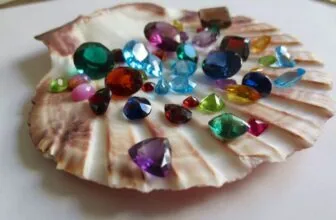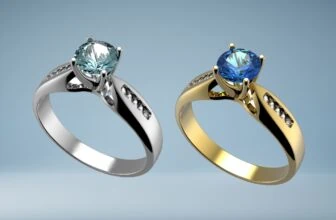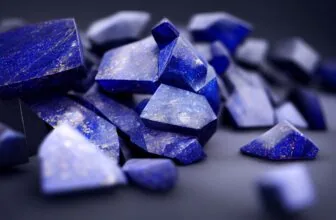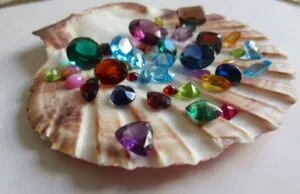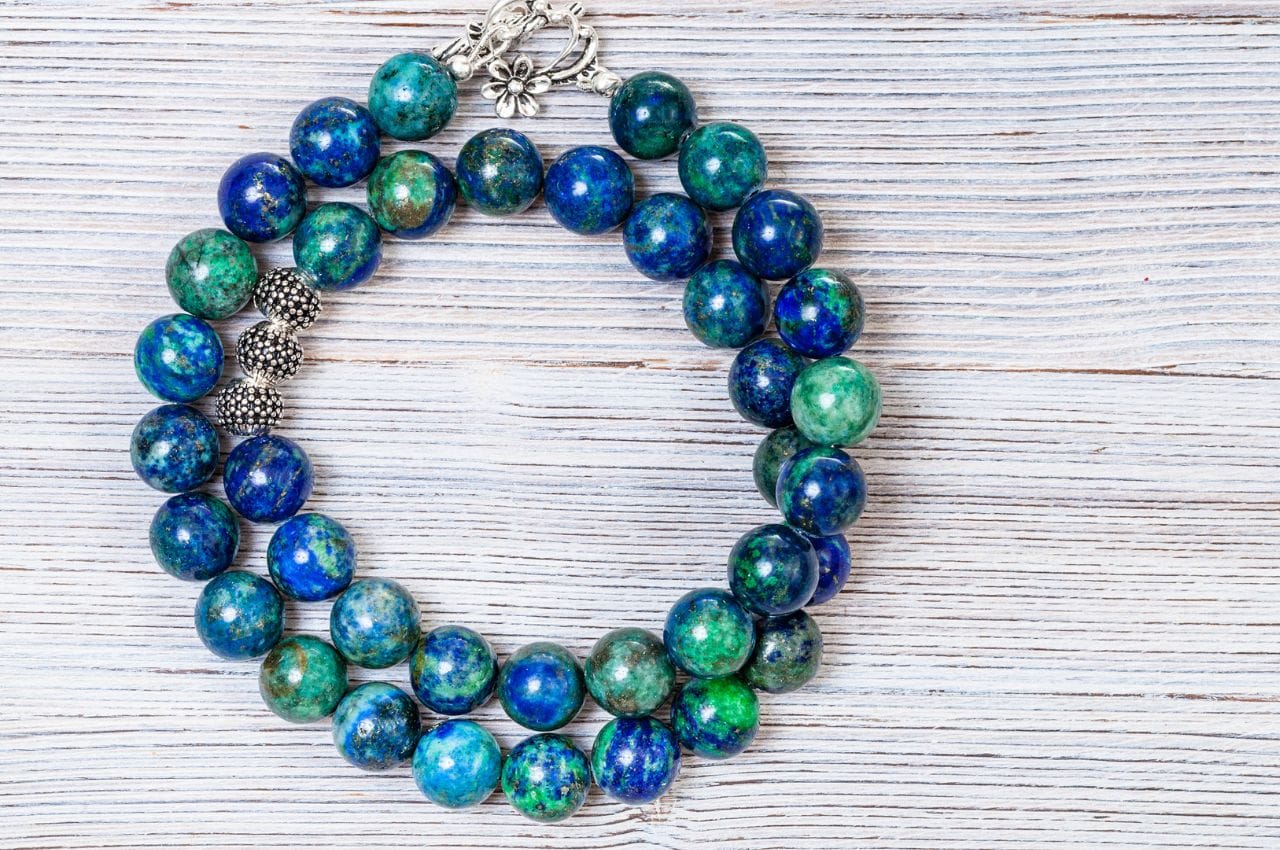
Table of Contents
Although azurite is not a mainstream gemstone for use in jewelry, it has been a favorite of gemstone collectors for a long time. For those lucky enough to own azurite jewelry, you’ll know that this is a stone unlike others. Its vivid blue hues are quite distinct and easy to tell apart from other gemstones.
Because azurite jewelry is rare, finding the perfect piece can be difficult and information can be limited. Let’s take a look at what you need to know about buying azurite jewelry and why this should be a gemstone to add to your collection.
What is Azurite?
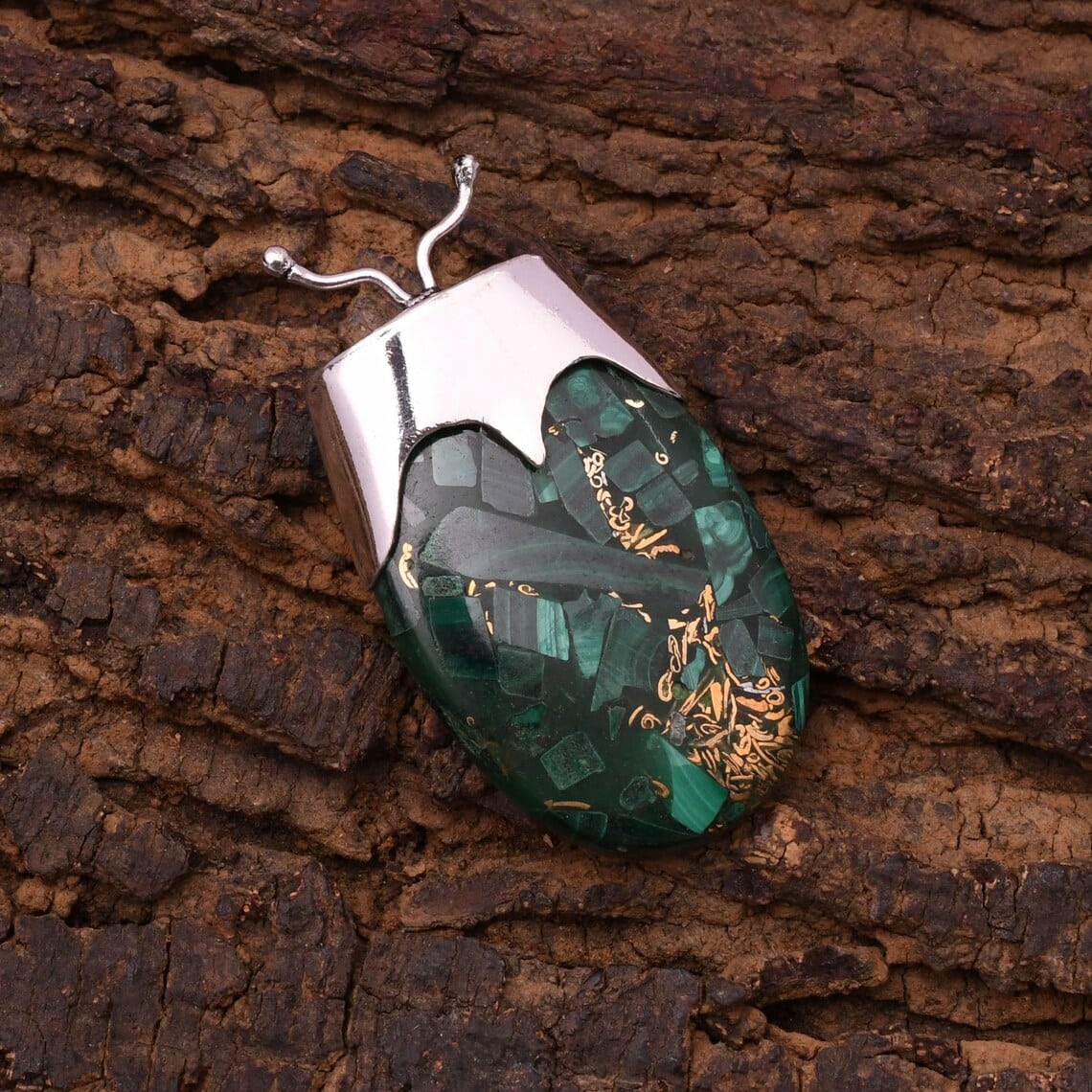
Azurite gets its name from its azure-blue color, which is distinct and easy to recognize. Initially, this gemstone was known as chessylite after the Chessy region in France where it originated. It is still sometimes called that, although azurite is the common trade name.
Azurite is a copper carbonate mineral and occurs when water containing carbon dioxide reacts with copper ore, which dissolves in little amounts. This copper laden waters may eventually evaporate and form into azurite, depending on conditions of the environment. Malachite, a beautiful green gemstone, forms in a similar way to azurite, which is why the two minerals are often found together and forms into the composite known as azurmalachite.
Pure azurite is very rare and is mainly sought after by mineral collectors. Azurite is found in a number of locations around the world, with noteworthy deposits in France, Germany, parts of the USA, Australia, Mexico and England.
Azurite is more than just a lapidary material. It’s been used since ancient times as a pigment, as copper ore and to dye textiles.
The 4C’s of Azurite
When evaluating azurite, there are 4 important C’s to take into consideration. These are: color, cut, clarity, and carat weight. Let’s take a closer look at each of these.
- Evaluating Azurite Color
Azurite is known for its azure-blue color, reminiscent of dark blue skies. It ranges in hue from blue to intense dark blue and can be similar in appearance to lapis lazuli.
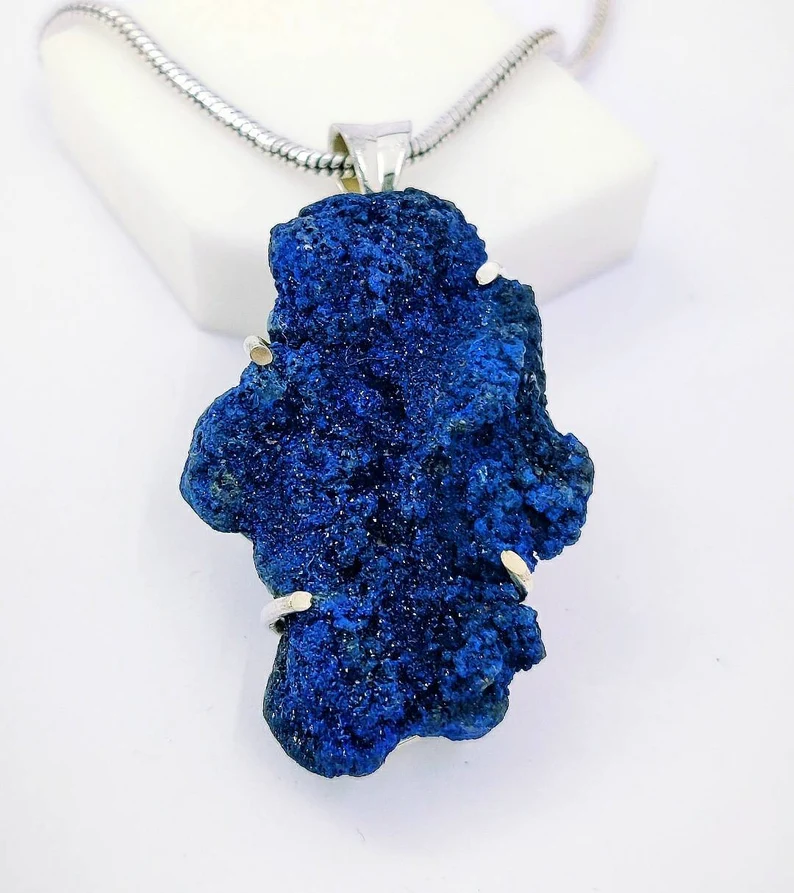
While azurite on its own displays an attractive color, when paired with malachite, azurite’s blue and malachite’s green create gemstones that exhibit intriguing and stunning swirls and patterns.
- Evaluating Azurite Clarity
Azurite is commonly opaque although translucent varieties can sometimes be found. The gemstone has a dull luster but when polished it can be vitreous. Sometimes, azurite may be waxed to improve its appearance and enhance its luster.
- Choosing Azurite Cut
Azurite is commonly cut en cabochon, which brings out the stone’s luster. However, you will also find many jewelers working with free form azurite, moulding the jewelry setting to suit the natural shape of the stone. This creates for exclusive, one-off pieces that celebrate the gemstone’s natural look.
Azurite is hardly ever faceted. Its soft nature does not lend itself well to faceting and cabochon or tumbled stones are preferred.
- Azurite Carat Weight
Azurite, with its deep blue color, usually comes in small sizes, affecting its carat weight. Large azurite crystals are rare, so it’s not common to find high carat weights in this gemstone. The carat weight plays a big role in azurite’s value.
However, because azurite is relatively soft and fragile, jewelers often cut it into smaller pieces. This means most azurite gems in jewelry have lower carat weights. But even small azurite stones are eye-catching due to their intense color and unique patterns, making them attractive and sought after, regardless of their size.
Synthetic, Treated and Imitation Azurite
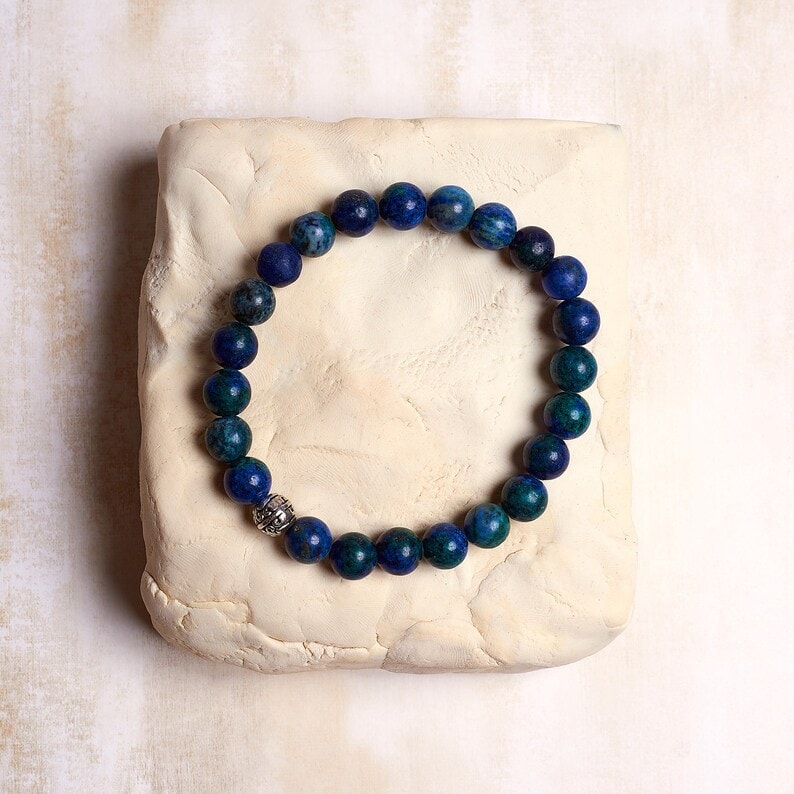
Synthetic or imitation azurite is rare in the market, mainly because it’s not as in demand as gems like diamonds or sapphires. Replicating azurite’s distinct, vivid blue color and its natural green malachite inclusions synthetically is challenging.
While some treatments might enhance azurite’s color or stability, these are not as frequent as with other gemstones. Most azurite available is natural, and valued for its untouched beauty.
When buying azurite, especially expensive pieces, it’s wise to go to trusted sellers and ask for authenticity certificates to ensure you’re getting a genuine azurite gemstone.
Types of Azurite Jewelry
1. Azurite Pendants
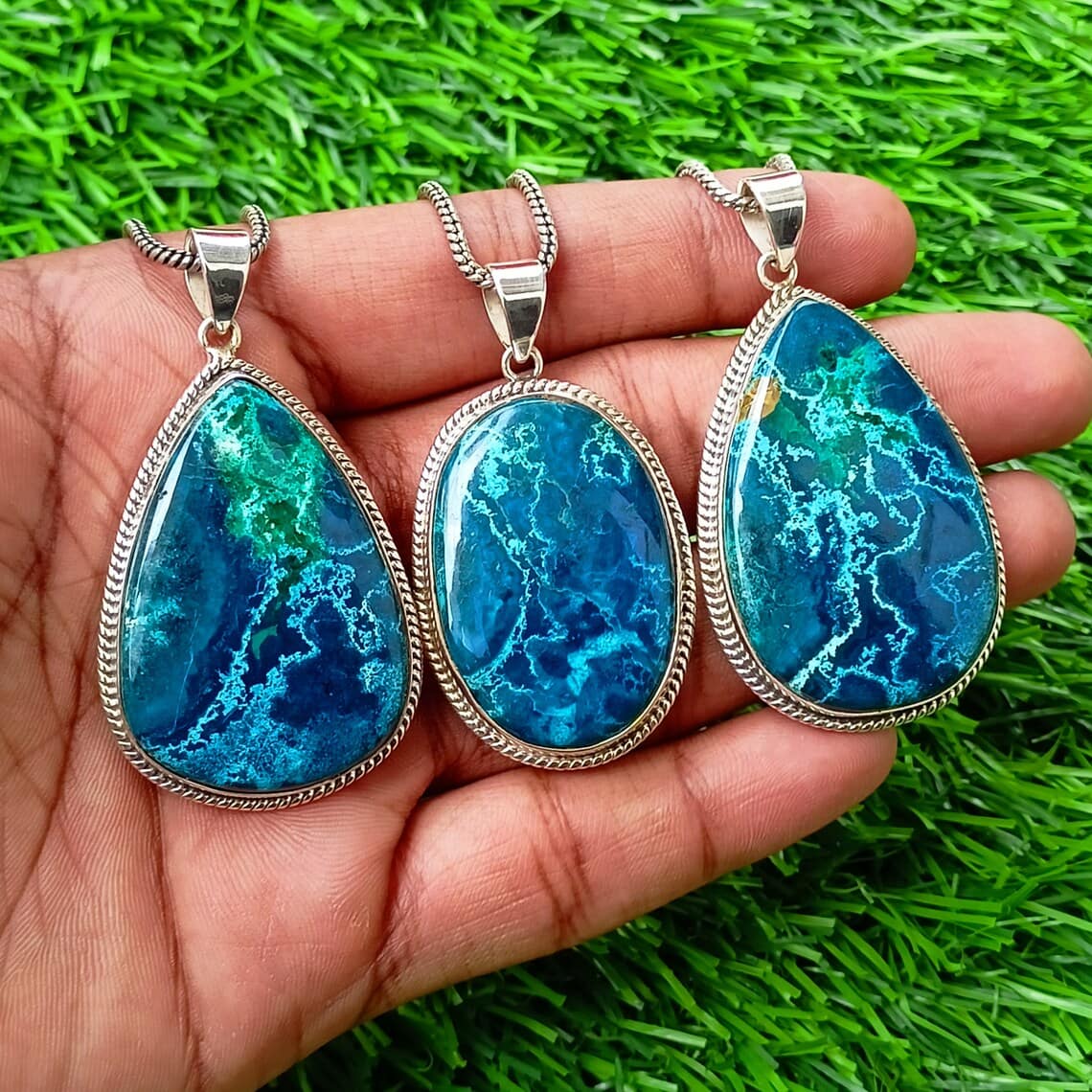
Azurite pendants, popular for their striking blue color, usually feature a single polished azurite gem set in a simple metal frame to showcase its natural beauty. Some designs mix azurite with malachite, creating a beautiful blue and green contrast.
These pendants come in various shapes and sizes, fitting for both everyday wear and special occasions as statement pieces.
2. Azurite Earrings
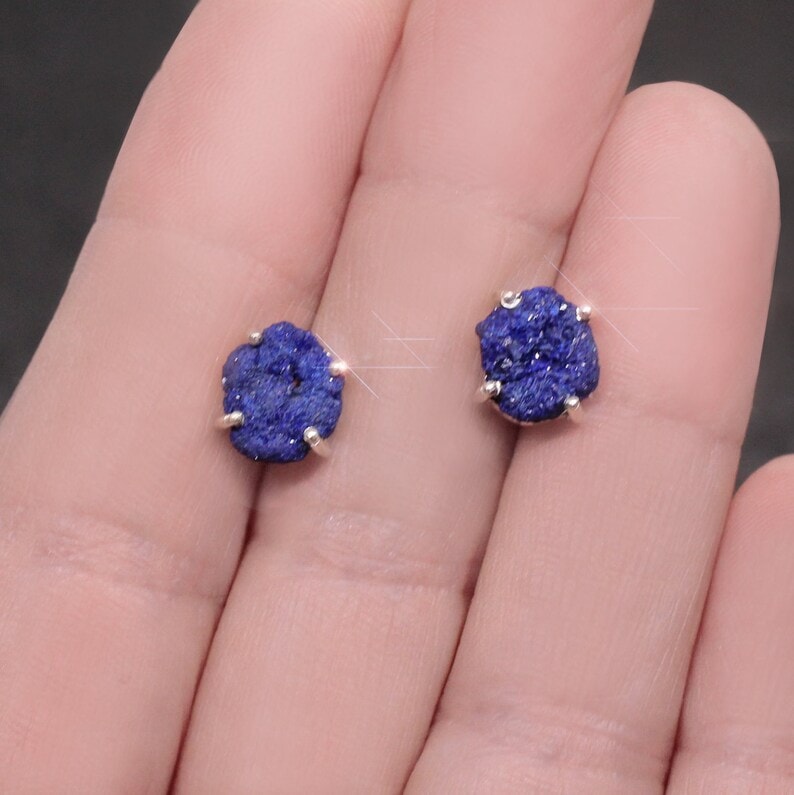
Azurite earrings bring elegance with the stone’s vibrant blue. Designers often make stud earrings for a subtle look or use azurite in drop and dangle designs for more impact.
The blue of azurite works well with silver and gold, making these earrings versatile for different styles. Best worn on special occasions, azurite earrings need careful handling due to the stone’s softness.
3. Azurite Rings
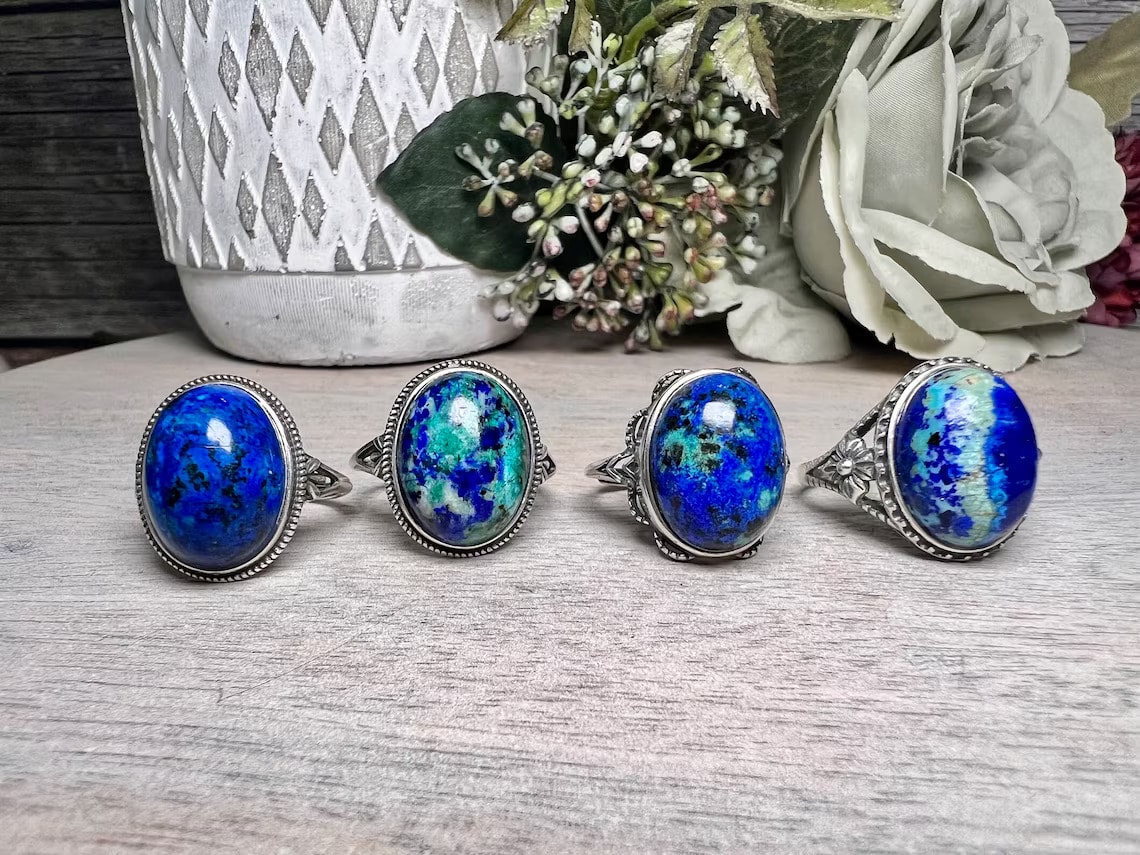
Azurite rings stand out with their unique color and patterns. These rings typically feature a large, polished azurite stone set on a simple band, focusing on the gem.
Some rings might mix azurite with other stones or detailed metalwork for extra elegance. Best suited for special events, these rings need gentle care to prevent damage.
4. Azurite Bracelets
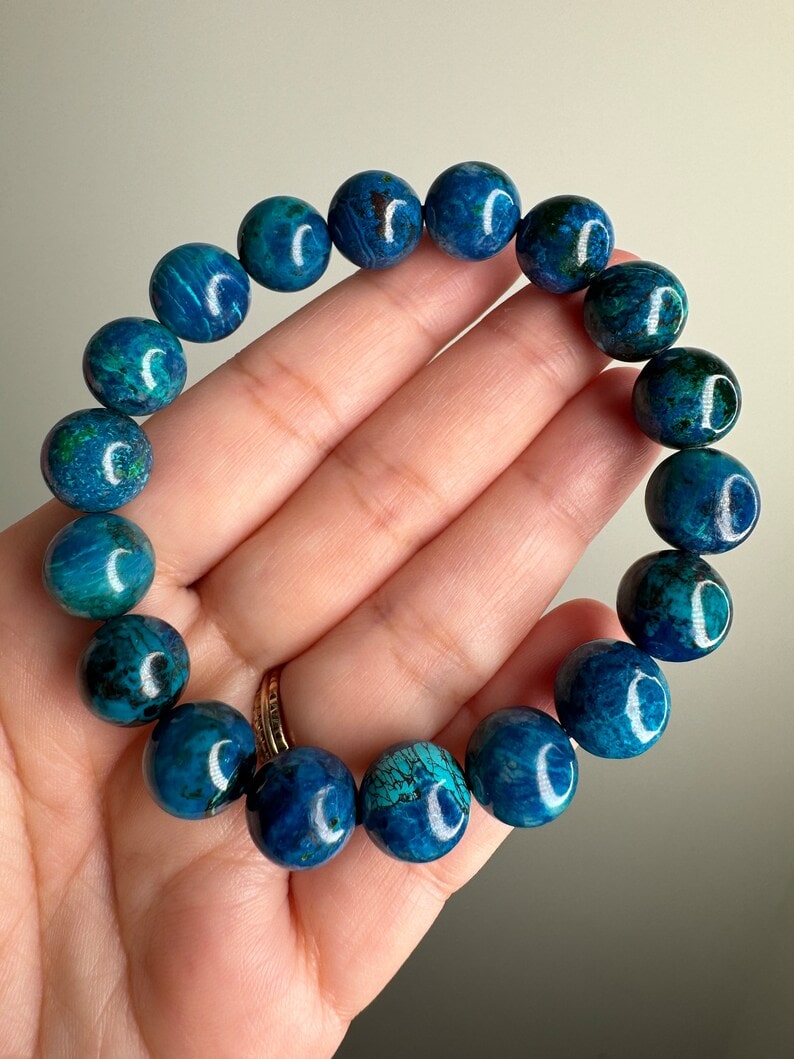
Azurite bracelets vary from beaded styles with small stones to larger, polished gem designs. They can be worn alone or with other matching azurite jewelry.
The deep blue of azurite makes these bracelets striking, great for adding color to an outfit. Since azurite is a soft stone, wearing these bracelets carefully is important to keep them looking beautiful.
Azurite Durability and Care
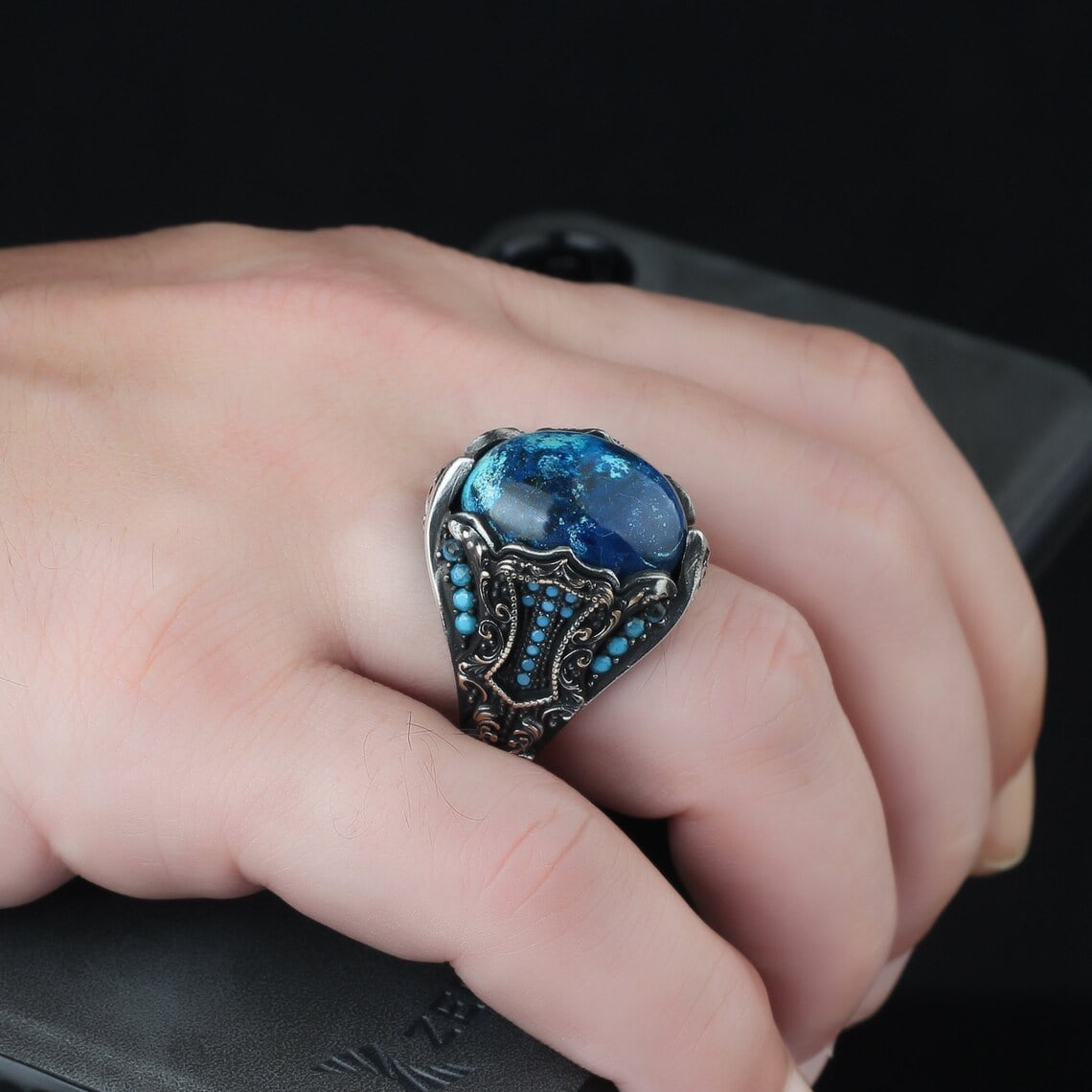
Azurite is a soft gemstone, ranking at 3.5 to 4 on the Mohs scale similar to gemstones like pearls and opals. It is very soft, has a brittle tenacity and a tendency to break if struck with force.
Azurite jewelry can be difficult to clean and must be handled with care. Always use a mild liquid soap and warm water when cleaning azurite jewelry, and if there is grime or dirt that needs to be brushed out, gently do so with a soft brush or cloth. Avoid harsh or abrasive cleaners as these can scratch and damage azurite. Avoid using ultrasonic cleaners on azurite jewelry as the intense vibrations can cause fractures.
Always take azurite jewelry off when engaging in activities such as swimming, playing sports, gardening, cleaning, or washing dishes as the chances of damage through impact and chemicals are high. Make sure that azurite doesn’t come into contact with household detergents and chemicals, including hairspray, cosmetics or perfumes.
Azurite is known to fade when exposed to heat and light, so keep it away from light sources, especially direct sunlight. If heated, azurite can change color from blue to green or even turn black.
Finally, when storing azurite jewelry, keep it in a separate fabric-lined jewelry box or place it in a fabric pouch, away from other metals and gemstones. This will keep it from being scratched by harder objects, including dust.
Azurite Meaning and Symbolism
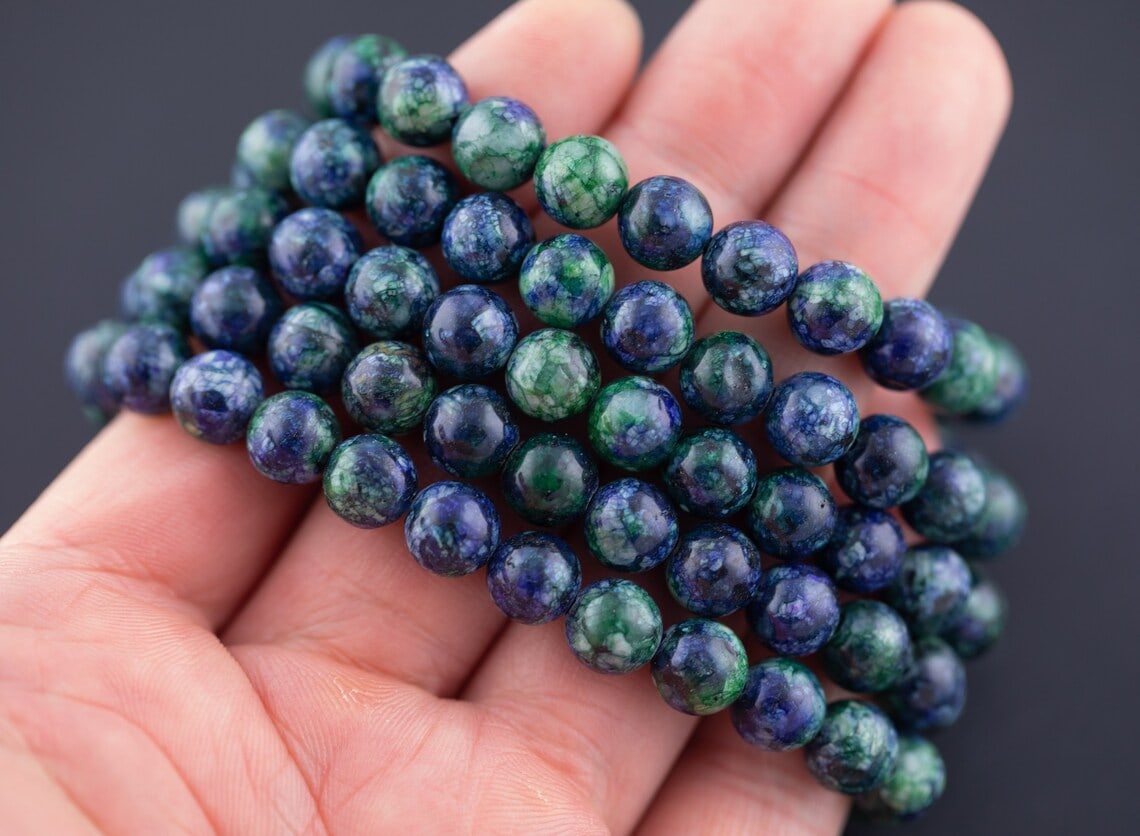
Azurite, known for its deep blue color, carries important meanings and symbolism across cultures. People have long valued it as a stone of insight and intuition, used by seers and mystics to strengthen their spiritual connections.
Its rich blue color represents depth, clarity, and expanded awareness, attracting those who want to deepen their understanding and consciousness. In crystal healing, azurite is thought to activate the third eye chakra, enhancing intuition, creativity, and inner wisdom.
The stone is also linked to mental clarity, helping clear confusion and sharpen focus, making it popular among students and scholars. Azurite symbolizes transformation, encouraging the release of old habits and fears for new perspectives.
It’s believed to relieve stress and bring emotional comfort. In some beliefs, azurite is seen as a symbol of prosperity and success, connected to the throat chakra to improve communication skills.
Where to Buy Azurite Jewelry
You’ve probably picked up on the fact that azurite jewelry is hard to come by. This makes this rare gemstone quite desirable and a great addition to any jewelry collection. We recommend taking your search online to find the ideal piece for you.
- Amazon’s platform offers the convenience of easy browsing and the assurance of customer reviews, which can be invaluable in assessing the quality and authenticity of the jewelry. However, due to the mass-market nature of the platform, the uniqueness of each piece can vary.
- Etsy’s marketplace is ideal for finding one-of-a-kind azurite pieces, each with its own story and character. Purchases on Etsy often support small businesses and independent creators.
Wrapping Up
Azurite stands out as more than a gemstone; it symbolizes deep wisdom and insight. Its striking blue color not only beautifies jewelry but also represents spiritual and mental clarity.
Azurite appeals for both its visual beauty and its meaningful symbolism. Adding it to your jewelry collection brings in a piece of history and personal significance, making it a timeless and valued choice for anyone.


